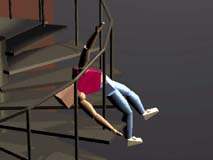

- Softimage 3d 3.7 tutorial software#
- Softimage 3d 3.7 tutorial plus#
- Softimage 3d 3.7 tutorial windows#
Animatable cluster and lattice deformations. Motion: Animation of objects and parameters via keyframes, constraints, mathematical expressions, paths, and function curves. Subdivision surface modeling was available via a third-party plugin from Phoenix Tools called MetaMesh. Boolean operations, extrusions, revolves, and bevels, as well as lattice deformations and relational modeling tools. Model: Tools for creating spline, polygon, patch, and NURBS primitives (later releases also included Metaballs). Softimage Creative Environment 2.66 - Matter module with Render Setup dialogue box The Softimage|3D feature set was divided between five menu sets: Model, Motion, Actor, Matter and Tools, each corresponding to a different part of the 3D production process: File:Softimage Creative Environment 2.66 - Render Dialogue.png Mental Ray 2.1, Surface Continuity Manager, DropPoints & SlidePoints, GoWithTheFlowĪdded multi-UV texturing, vertex colors.
Softimage 3d 3.7 tutorial plus#
New selection & viewing tools, RenderMap, Nintendo 64 supportĪdded animation sequencer, polygon/color reduction toolsįirst release by Avid Technology, Plus & Performance options Introduced Extreme edition (particles, metaballs, mental ray) Introduced Actor module, IK, constraints, deformation latticesĪdded clusters, weighted envelopes. Release history Versionīeta debuted at Siggraph '88, v1.0 commercial release in 1989 Because of Softimage|3D's entrenched user base, minor revisions continued until the final version of Softimage|3D, version 4.0, was released in 2002. Development was delayed during a 1998 acquisition by Avid Technology, and in the summer of 2000 Softimage|3D's successor was finally released as Softimage XSI. began developing a successor to Softimage|3D codenamed "Sumatra," which was designed with a more modern and extensible architecture to compete with other major packages like Alias|Wavefront's Maya. 3D paint functionality was added a year later in version 3.7. Softimage|3D Extreme 3.5, released later that year, included particle effects and the mental ray renderer, which offered area lights, ray tracing, and other advanced features.
Softimage 3d 3.7 tutorial windows#
The first Windows port of Softimage|3D, version 3.0, was released in early 1996.
Softimage 3d 3.7 tutorial software#
with the intention of introducing high-end 3D animation software to its Windows NT platform, and subsequently renamed it "Softimage|3D." In January 1995, Softimage|3D was announced as the official 3D development tool for the Sega Saturn.

In 1994, Microsoft acquired Softimage, Co. Its character animation toolset expanded substantially with the addition of inverse kinematics in version 2, which was used to animate the dinosaurs in Jurassic Park. Softimage Creative Environment was adopted by major visual effects studios like Industrial Light & Magic and Digital Domain for use in their production pipelines, which also typically included software from Alias Research, Kroyer Films, Angel Studios and Pixar Animation Studios Inc. The software was initially demonstrated at SIGGRAPH in 1988 and was released for Silicon Graphics workstations the following year as the Softimage Creative Environment™. In 1986, National Film Board of Canada filmmaker Daniel Langlois, in partnership with software engineers Richard Mercille and Laurent Lauzon, began developing an integrated 3D modeling, animation, and rendering package with a graphical interface targeted at visual artists.


 0 kommentar(er)
0 kommentar(er)
